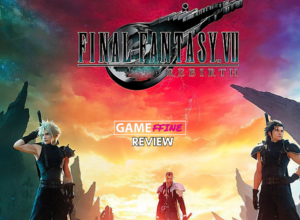Ever since the console’s launch in 2017, the Nintendo Switch has revolutionized the gaming industry with its hybrid nature, allowing players to have the experience of a home console and a handheld on the same device. Amongst its increasing number of games, lies a vast sea of indie titles that continues to stretch far. What may be the reason behind this?
Nintendo has been known for its exclusivity for years. You’ll never see Mario stomping on goombas on other consoles or PC, at least not legally. When Nintendo opened up the Wii U and the Nintendo 3DS to indie games, dubbing them as “Nindies”, it was a pleasant surprise to a lot of people. However, it was a challenging feat for developers to program games. Back then, it was a struggle to port games made with middleware engines onto the Wii U, and the 3DS wasn’t exactly graphically advanced with a resolution of 240p on each screen. That’s why there’s only about a handful or so of indie games you can find on these preceding consoles.
Luckily, the Switch changed that, offering well-developed support for Unity and Unreal, making it a lot easier for developers to port their games. On top of that, the Switch isn’t exactly known for its powerful processor. With most indie games featuring less demanding visuals, the Switch served as the perfect platform for releasing these titles. Nintendo began reaching out to indie developers, even more, engaging with them at conferences, and promoting them even further. Now, alongside the Nintendo Direct, online presentations showcasing upcoming games is a separate Nindies Direct, meant entirely for indie games.

They even went as far as to collaborate with indie games on first-party titles. If you’re into indie games, chances are you’ve heard of Undertale, the hit RPG developed by Toby Fox. The crossover fighting game Super Smash Bros. Ultimate featured a DLC skin for one of Undertale’s characters, Sans, an inclusion that was met with a lot of hype, as it included the infamous “Megalovania” track from the game.
It would be a crime to not mention Cadence of Hyrule here. Developed by the indie studio Brace Yourself Games, it started off with the intention of including Legend of Zelda elements as DLC in the Nintendo Switch port of Crypt of the NecroDancer, a rhythm-based game inspired by the original Zelda games. Nintendo instead expressed their interest in developing a full-fledged game, and thus Cadence of Hyrule was made, featuring new compositions of older soundtracks from the series, the protagonists- Link and Princess Zelda as the main playable characters, and lore that is standard for a Zelda game.

Evidently, there’s been a lot of backing by Nintendo to the indie scene, but naturally, the other reason for their success on the Switch is the customer base. As of today, there are plenty of indie games, such as Hollow Knight and Overcooked, whose quality matches up to their AAA competitors, while being priced at much less. I myself have clocked in some 200 hours in Stardew Valley on the Switch, a role-playing simulator game. I’m definitely not alone when I say that a lot of these games provide their money’s worth, sometimes even more than what you’re paying for.
It’s pretty clear why players prefer buying indie games on the Switch compared to any other platform – portability. The nature of most indie games is such that most of them don’t require too much dedication in terms of time. Combine that with the Switch’s ability to take it on-the-go, and it’s the perfect device for short bursts of gaming. That’s why there’s a dedicated audience ready to shell out money on these titles.

Blue Fire, Baldo, and The Last Campfire are some of the many near-future releases to look forward to on the Switch. Without a shadow of a doubt, Nintendo isn’t planning on slowing down the release of indie games on the Switch, and to that I say, the more the merrier!





1 comment